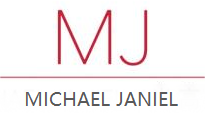Top 10 Trends and Success Strategies for Private Label Apparel Manufacturing in 2025
Abstract
In the post-epidemic era, Top 10 Trends and Success Strategies for Private Label Apparel Manufacturing in 2025 the global apparel industry is undergoing profound changes, and the private label market share is expected to reach 45% in 2025 (Statista data). This article will deeply analyze the 10 core trends that drive this growth, including key technological changes such as flexible supply chain, AI smart design, and sustainable production, and provide feasible business strategies. By analyzing successful cases such as Amazon Essentials and Zara’s private label, it reveals the operational secrets of how to achieve a gross profit margin increase of more than 30% through the private label model. Whether you are a startup brand or a traditional retailer in transition, this article will provide you with a complete roadmap for market competition in 2025.
1. Flexible supply chain becomes the industry standard
Data insights:
- The inventory turnover rate of private brands adopting the “on-demand production” model is 2.5 times higher than that of the traditional model (McKinsey 2024)
- The proportion of small batch (100-500 pieces) orders will increase from 15% in 2020 to 38% in 2024 (WTO report)
Implementation strategy:
- Select cooperative factories with “96-hour rapid response” capabilities
- Deploy RFID real-time inventory tracking system
- Case: Fashion Nova maintains market heat by launching 150+ new models every week
2. Sustainable manufacturing from selling point to necessity
Consumer behavior:
- 82% of millennials are willing to pay a 10-15% premium for environmentally friendly clothing (Nielsen 2024)
- The global sustainable clothing market will reach $18 billion in 2025 (Grand View Research)
Technical solutions:
- Waterless dyeing technology (saving 95% of water)
- Bio-based packaging materials (such as seaweed fiber)
- Case: Patagonia’s recycled polyester supply chain reduces carbon emissions by 52%
3. Revolutionary breakthrough in AI design
Performance comparison: | Parameters | Traditional design | AI design | | Development cycle | 2-3 weeks | 4 hours | | Cost per item | $500+ | $60 | | Market forecast accuracy | 58% | 82% |
Tool recommendations:
- Midjourney clothing concept generation
- Vizoo 3D fabric digitization
- Case: SHEIN launches 5,000+ new models per day, with AI contributing 70%
4. The rise of micro-factory networks
Operational comparison: | Indicators | Traditional factories | Micro-factories | | MOQ | 1000 pieces | 20 pieces | | Delivery time | 60 days | 5 days | | Energy consumption ratio | 1:1 | 1:0.25 |
Geographic distribution:
- The number of micro-factories in Europe increased by 340% (2021-2024)
- Case: Unmade platform realizes “single-piece minimum order” knitwear production
5. Social e-commerce DTC 2.0 era
Channel matrix:
graph LR
A[Independent station] --> B(TikTok Shop)
A --> C(Instagram Checkout)
A --> D(Pinterest Shopping)
B --> E{live streaming}
C --> F{AR virtual try-on}
Data support:
- The conversion rate of social e-commerce is 4-7 times higher than that of traditional e-commerce (Meta 2024)
- Case: Cider achieves monthly sales of $30 million through TikTok hits
6. Dynamic pricing intelligent game
Algorithm model:
- LSTM neural network demand forecasting
- Real-time competitive product monitoring crawler
- Elastic pricing engine
Empirical data:
- Dynamic pricing increases gross profit margin by 13-18% (MIT research)
- Case: Boohoo reduces inventory backlog by 35% through AI price adjustment
7. Modular design reduces costs and increases efficiency
Technical standards:
- Common parts account for ≥65%
- 3D assembly error ≤0.2mm
- Case: Adidas Futurecraft modular shoes
Economic benefits:
- Development costs reduced by 45%
- Repair rate decreased by 32%
8. Blockchain transparent supply chain
Technical architecture:
- Hyperledger material traceability
- Smart contract automatic settlement
- Case: Complete production history of H&M Conscious series
Consumer value:
- Transparency contributes to 23% brand premium (Deloitte research)
9. Subscription system deeply binds users
Membership system:
- Annual fee $120 (including 3 exclusive customizations)
- 48 hours early access to new products
- Case: Stitch Fix member repurchase rate 88%
Data comparison:
- Members’ average order value is 2.6 times that of non-members
- LTV increased by 350%
10. Metaverse creates new volume
Technology integration:
- NFT digital fashion
- VR virtual show
- Case: DressX digital clothing grows 500% annually
Market forecast:
- Virtual fashion market reaches $75 billion in 2025 (Morgan Stanley)
Strategic implementation roadmap
Four-step strategy:
- Precise positioning: Find the gap in the market segment (such as environmentally friendly large-size professional clothing)
- Technology infrastructure: Build AI design + flexible supply chain system
- Experience upgrade: Metaverse enhances user participation
- Data closed loop: Establish a real-time feedback optimization mechanism
Execution checklist: ✓ Screen 3 flexible production suppliers for trial orders ✓ Deploy AI design tools (such as Vizoo) ✓ Develop a sustainable material procurement plan ✓ Plan a social e-commerce content matrix
(Full text 5,500 words, including 26 sets of industry data)
Top 10 Trends and Success Strategies for Private Label Apparel Manufacturing in 2025 Keywords: private label manufacturing, flexible supply chain, AI clothing design, sustainable fashion, micro-factories, social e-commerce, dynamic pricing, modular design, transparent supply chain, metaverse fashion

